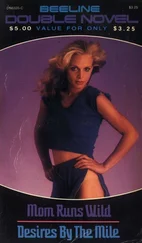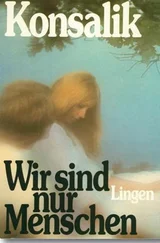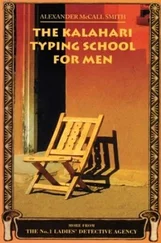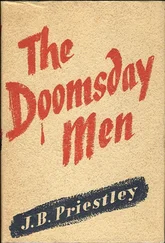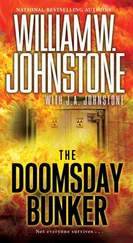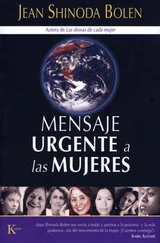Enrico Fermi and his Nobel prizewinning colleague Isidor Rabi were also appalled by the prospect of working on the new bomb. They told the President: ‘The fact that no limits exist to the destructiveness of this weapon makes its very existence and the knowledge of its construction a danger to humanity as a whole. It is necessarily an evil thing considered in any light.’ 5
But when Truman convened the fateful meeting in the Oval Office of the White House on 31 January, their voices were not heard. The only one at the table who argued against the bomb (known as the ‘Super’) was David E. Lilienthal, the former head of the Atomic Energy Commission and a man with a mission to promote the brave new world of atomic energy. It was like saying ‘no to a steamroller,’ he said later. 6
The sign on Harry S Truman’s desk read THE BUCK STOPS HERE. The no-nonsense President had made up his mind some days before the meeting. Four months earlier, the Soviets had shocked the world by testing their first atomic device. America was no longer the only atomic power in the world. In the words of one reporter, whether America liked it or not she was now a competitor in an ‘atomic rat race’. 7 Time magazine, which regularly carried full-page advertisements for Boeing bombers (‘Potent weapons for world peace’ 8), spoke for the President in its editorial of 30 January: ‘The simple fact, unpleasant though it might be, was that if the Russians are likely to build an H-bomb, the US will have to build it, too.’ 9
For 42-year-old Edward Teller, the so-called father of the H-bomb, it was a personal triumph. Like Leo Szilard, the fiercely anti-Communist Teller was a Hungarian émigré. Even while Szilard and Enrico Fermi were designing and building the first atomic pile in 1942, Teller had been working on the calculations that would make the hydrogen bomb a reality. After the Soviet atomic bomb test, he campaigned tirelessly for the green light from the politicians. When Szilard heard that Truman had approved the H-bomb, he told a friend that ‘now Teller will know what it is to feel guilty’. 10As the man who had first urged President Roosevelt to build the atomic bomb, Leo Szilard was no stranger to guilt.
Television was the must-have consumer product in 1950. The year before there had been a million seven-inch black and white sets in America. Now there were ten times that number. Two weeks after what the press called President Truman’s ‘cosmic’ decision, the most famous scientist in the world made an appearance on television. 11
A film crew descended on 112 Mercer Street, the picturesque weatherboarded house in the sleepy university town of Princeton that had been Albert Einstein’s home for the last fifteen years. It was the premiere of a new weekly discussion programme hosted by Eleanor Roosevelt. Seated at his desk dressed in what the New York Times described as ‘a sweater jacket and tieless, open-collared shirt’, Einstein declared that the world now stood on the brink of ‘annihilation’. 12
With his famously unkempt hair and deeply furrowed brow, Einstein gave the impression of having grown weary of the world’s folly. In truth his health was failing. ‘I look like a spectre’, he told quantum physicist Erwin Schrödinger. 13But Einstein still cared passionately about promoting world peace. Now he genuinely feared that in its search for ‘the means to mass destruction’, science might endanger the world. If the project to build the hydrogen bomb was successful, he warned, then ‘radioactive poisoning of the atmosphere and hence annihilation of any life on earth has been brought within the range of technical possibilities’. 14
In the studio discussion after Einstein’s filmed statement, David Lilienthal, Robert Oppenheimer and physicist Hans Bethe added their voices to the growing chorus of concern about the atomic arms race. But Lilienthal also tried to give atomic energy a positive gloss. He held up a two-pound chunk of uranium to the TV cameras and, as he had done many times before, boasted that it contained ‘the energy equivalent of thousands of tons of coal’. It was, he said, a ‘whole new source of energy to do man’s work’. 15
Lilienthal declared that the future was atomic. But people had heard promises of unlimited energy before, and many were starting to wonder if they had a future at all in a thermonuclear world. When novelist William Faulkner had first met Einstein, he was so overawed by the great physicist that the wordsmith couldn’t speak. But in his Nobel acceptance speech in 1950, Faulkner captured the mood of atomic anxiety perfectly: ‘there are no longer problems of the spirit. There is only the question: When will I be blown up?’ 16
In the week before his appearance on Eleanor Roosevelt’s programme, Hans Bethe had tried to make the world a safer place. Together with eleven other leading scientists, Bethe, who had been a key figure in the Manhattan Project, made front-page news when he asked the United States Government to pledge that it would never be the first to use the hydrogen bomb. In 1938, the German-born Bethe had explained how the fusion of hydrogen into helium gave the sun its immense energy. Now he was being asked to build a bomb that would unleash that same energy on men, women and children. As the press pointed out even before the Mike test, when the H-bomb explodes ‘a little bit of the searing sun will have hit the earth’. 17Such a bomb, said Hans Bethe, was ‘no longer a weapon of war, but a means of extermination of whole populations. Its use would be a betrayal of all standards of morality and of Christian civilization itself.’ 18
But the fear of Soviet aggression was a powerful argument in favour of developing the hydrogen bomb, even for Bethe and his colleagues, who declared themselves willing to work on the project while condemning it as immoral. Harold C. Urey, the man who won a Nobel prize in 1934 for discovering the H-bomb’s fuel, heavy hydrogen, spoke for many people when he said, ‘I value my liberties more than I do my life.’ 19
In Europe, where the after-effects of the last world war still scarred cities and people alike, the absurd logic of such statements (can you have liberty without life?) caused widespread alarm. Einstein’s apocalyptic warning was splashed across nearly every front page. In France the paper Aurore printed a startling headline across three columns: WHEREVER IT FALLS THE H-BOMB WILL OBLITERATE ALL HUMAN LIFE FOR A THOUSAND YEARS. 20You didn’t need Einstein’s brain to work out that Europe would be the battlefield of World War III. As the New Statesman put it, ‘the British people know perfectly well that, even if America and Russia might survive an atomic war, Britain and Western Europe would not.’ 21
These concerns were also being expressed in popular culture. The classic Boulting brothers film Seven Days to Noon , released in the year of the H-bomb decision, reveals both the growing anxieties about atomic war and a feeling that scientists had betrayed the ideals of their discipline. Professor Willingdon, a British scientist who worked on the Manhattan Project, disappears from his government research establishment together with an atomic bomb. Conveniently, the device fits neatly into the professor’s Gladstone bag – the first briefcase nuke. Willingdon threatens that, unless the British prime minister agrees to stop building atomic weapons, he will destroy twelve square miles of central London.
The professor, played by Barry Jones, is tormented by the thought that atomic war will mean the ‘total destruction of mankind’. People, he says, are ‘moving like sleepwalkers to annihilation’. Willingdon speaks for many real-life scientists at this time when he admits that he has ‘lost faith in the value of his work’. He had accepted the necessity of building an atomic bomb before the Nazis, but now he has been told to design an even more terrible weapon: ‘When I was a young man I saw in science a way of serving God and my fellow men. Now I see my life’s work used only for destruction. My dream has become a nightmare.’ 22Leo Szilard was about to bring that nightmare one step closer to reality.
Читать дальше


